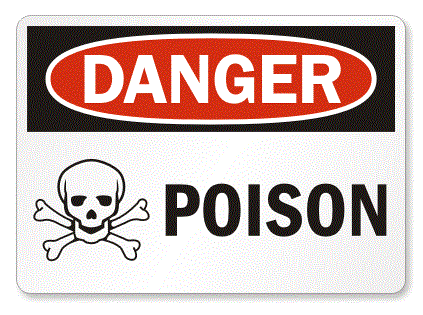Many Bites & Stings have mild reactions; however, some bites and stings can have serious consequences, if untreated. Most stings aren’t fatal, but few insects do carry life-threatening viruses and diseases, such as West Nile Virus, Zika Virus or Lyme Disease. If severe reactions (anaphylaxis) are present, these are some symptoms you should look for: lowered blood pressure, abdominal pain, difficulty breathing, swelling, redness, vomiting, and nausea.
Mild reactions: Use universal precautions, remove the stinger, apply a cold pack, give the patient a pain reliever, and use ointment, such as Benadryl, or any antihistamine, if necessary. Mild allergic reactions are diarrhea, swelling, cramps, nausea, and vomiting.
Severe reactions: Difficulty breathing, swelling (lips, throat, etc.), nausea, vomiting, hives, rapid heartbeat, and faintness and dizziness.
Treatment: Administer an epinephrine auto-injection into the patient's mid-outer thigh, not buttock, hands, feet, veins, or other body parts. Perform CPR, if needed. Have the patient lay on his/her side to prevent choking, if necessary.
If a Poisoning is suspected, make sure to call the National Capital Poison Center at 1-800-222-1222. Signs of Poisoning: vomiting, difficulty breathing, sleepiness, confusion, burns (redness) around the mouth, chemical odors out from the mouth, and burns on clothing or skin. For poison-ingestion do not administer anything by mouth unless advised to do so by the PCC or EMS personnel.
Treatment: Make sure to take the patient outside for fresh air. Have the patient flush out his/her mouth. Make sure to read the label of the chemicals that were induced and read the instructions for poisoning. Flush the patient’s eyes and have the skin cleansed. If the patient isn’t breathing, perform CPR. Make sure to provide EMS personnel with the label if the patient needs medical attention.
A Drug Overdose is a dose larger than the recommended assumption. Many reactions can occur, such as sleepiness or unconsciousness, excitement with a rapid heartbeat, hallucinations, impaired judgment, and decision-making skills. Symptoms: death, unconsciousness, convulsions, delusional behavior, abnormal pupil size, difficulty breathing, nausea, non-reactive pupils, vomiting, sweating, numbness, and violently aggressive behavior.
Treatment: Check universal precautions. Check if there’s a pulse, if not, perform CPR. Keep the patient calm and reassured of his/her safety. Check for any shock symptoms. For seizures and convulsions apply first-aid. Monitor vital signs. Make sure to document any and all drugs taken and keep the container and label. Naloxone should be used by lay persons in suspected opioid-related respiratory or circulatory arrest who have a definite pulse but no normal breathing or only gasping. Naloxone is a drug that reverses the effects of opiates such as fentanyl, oxycodone, heroin, and codeine.
1. For suspected opioid poisoning
- Check responsiveness
- Shout for nearby help
- Activate the emergency response system
- Get naloxone and an AED if possible
If yes, prevent deterioration:
- Tap and shout
- Reposition
- Consider naloxone
- Continue to assess responsiveness and breathing until EMS arrives
- Give naloxone
- Use an AED
- Resume CPR until EMS arrives
Alcohol Intoxication is the rapid consumption of large amounts of alcohol in a short period. It’s also known as alcohol poisoning and can affect your gag reflex, body temperature, breathing, and heart rate. It can also occur when a child or adult intentionally or accidentally consumes household products that contain alcohol. Symptoms include vomiting, hypothermia (low body temperature), unconsciousness (passing out), seizures, and blue-tinged or pale skin.
Treatment: If you suspect alcohol intoxication, call 911 immediately. Then, move the person away from alcohol. If they’re conscious, encourage them to lie on their side as you await medical attention. If the person is unconscious, gently turn them to their side to prevent them from choking on their vomit.
Carbon Monoxide Poisoning occurs when you breathe in carbon monoxide (CO) at excessive levels, causing it to build up in your bloodstream. CO is a gas produced by burning wood, propane, or gasoline, and it can easily accumulate at dangerous levels in enclosed spaces. Carbon Monoxide Poisoning often results in severe tissue damage and even death. Symptoms include weakness, confusion, dizziness, loss of consciousness, shortness of breath, dull headache, vomiting or nausea, and blurred vision.
Treatment: If you suspect Carbon Monoxide Poisoning, call 911 or your local emergency services immediately. As you await medical care, get fresh air by leaving the area with CO. If you can, it’s wise to turn off the CO source.
Perform CPR if the person loses consciousness or stops breathing.





